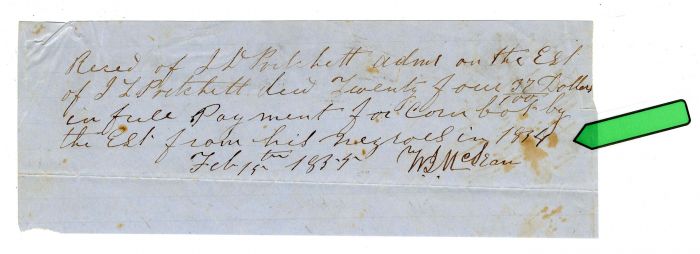1835 - Alabama Slavery Document
Inv# AM1713
Receipt of J.D. Pretchett dated Feb. 15, 1835 for payment for corn bot by "the Est. from his negroes in 1834". Economists have modeled the circumstances under which slavery (and variants such as serfdom) appear and disappear. One observation is that slavery becomes more desirable for landowners where land is abundant, but labour is scarce, such that rent is depressed and paid workers can demand high wages. If the opposite holds true, then it is more costly for landowners to guard the slaves than to employ paid workers who can demand only low wages because of the degree of competition. Thus, first slavery and then serfdom gradually decreased in Europe as the population grew. They were reintroduced in the Americas and in Russia as large areas of land with few inhabitants became available.
Slavery is more common when the tasks are relatively simple and thus easy to supervise, such as large-scale monocrops such as sugarcane and cotton, in which output depended on economies of scale. This enables systems of labour, such as the gang system in the United States, to become prominent on large plantations where field hands toiled with factory-like precision. Then, each work gang was based on an internal division of labour that assigned every member of the gang to a task and made each worker's performance dependent on the actions of the others. The slaves chopped out the weeds that surrounded the cotton plants as well as excess sprouts. Plow gangs followed behind, stirring the soil near the plants and tossing it back around the plants. Thus, the gang system worked like an assembly line. Read more at https://en.wikipedia.org/wiki/Slavery










Ebay ID: labarre_galleries